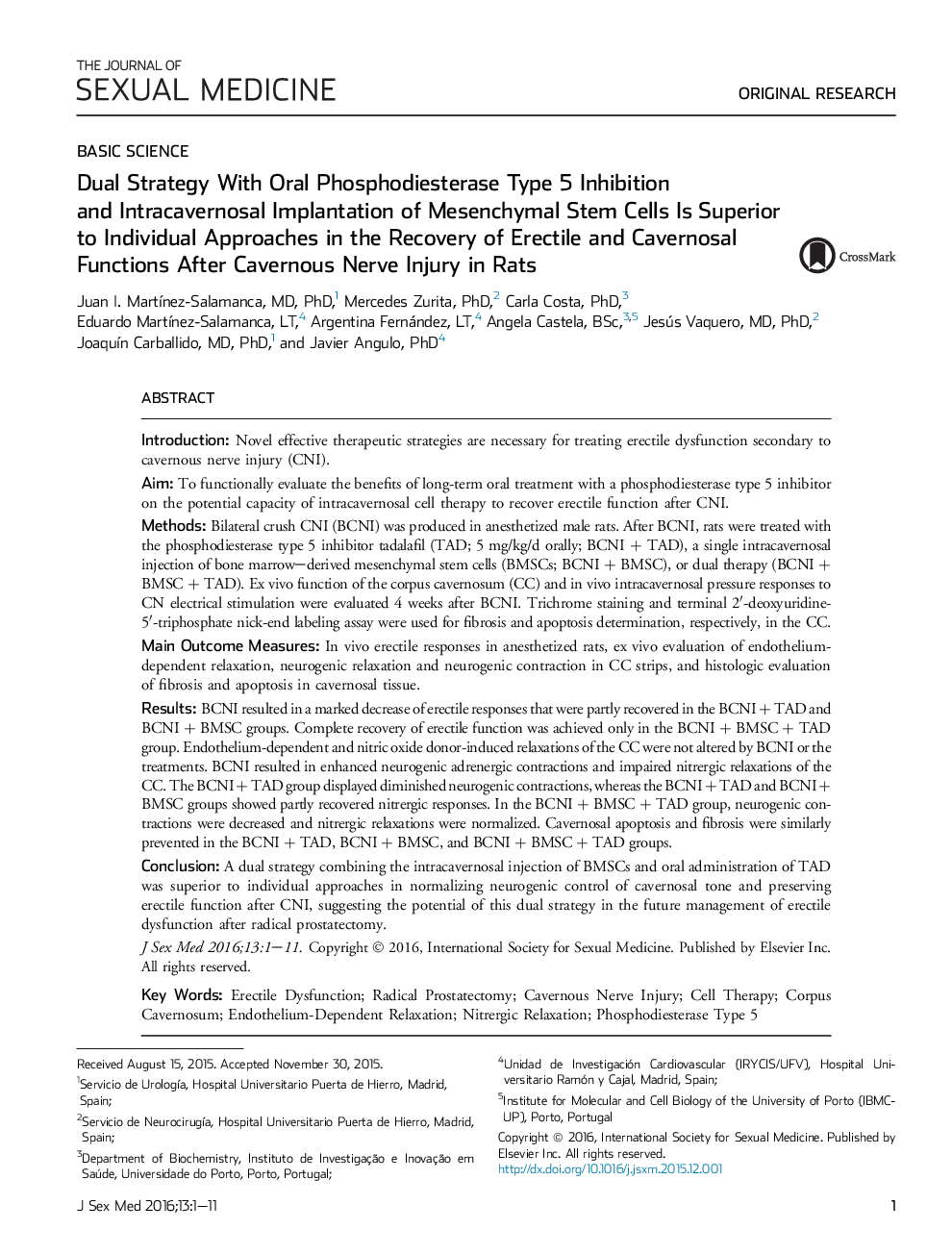| Article ID | Journal | Published Year | Pages | File Type |
|---|---|---|---|---|
| 4269470 | The Journal of Sexual Medicine | 2016 | 11 Pages |
IntroductionNovel effective therapeutic strategies are necessary for treating erectile dysfunction secondary to cavernous nerve injury (CNI).AimTo functionally evaluate the benefits of long-term oral treatment with a phosphodiesterase type 5 inhibitor on the potential capacity of intracavernosal cell therapy to recover erectile function after CNI.MethodsBilateral crush CNI (BCNI) was produced in anesthetized male rats. After BCNI, rats were treated with the phosphodiesterase type 5 inhibitor tadalafil (TAD; 5 mg/kg/d orally; BCNI + TAD), a single intracavernosal injection of bone marrow–derived mesenchymal stem cells (BMSCs; BCNI + BMSC), or dual therapy (BCNI + BMSC + TAD). Ex vivo function of the corpus cavernosum (CC) and in vivo intracavernosal pressure responses to CN electrical stimulation were evaluated 4 weeks after BCNI. Trichrome staining and terminal 2′-deoxyuridine-5′-triphosphate nick-end labeling assay were used for fibrosis and apoptosis determination, respectively, in the CC.Main Outcome MeasuresIn vivo erectile responses in anesthetized rats, ex vivo evaluation of endothelium-dependent relaxation, neurogenic relaxation and neurogenic contraction in CC strips, and histologic evaluation of fibrosis and apoptosis in cavernosal tissue.ResultsBCNI resulted in a marked decrease of erectile responses that were partly recovered in the BCNI + TAD and BCNI + BMSC groups. Complete recovery of erectile function was achieved only in the BCNI + BMSC + TAD group. Endothelium-dependent and nitric oxide donor-induced relaxations of the CC were not altered by BCNI or the treatments. BCNI resulted in enhanced neurogenic adrenergic contractions and impaired nitrergic relaxations of the CC. The BCNI + TAD group displayed diminished neurogenic contractions, whereas the BCNI + TAD and BCNI + BMSC groups showed partly recovered nitrergic responses. In the BCNI + BMSC + TAD group, neurogenic contractions were decreased and nitrergic relaxations were normalized. Cavernosal apoptosis and fibrosis were similarly prevented in the BCNI + TAD, BCNI + BMSC, and BCNI + BMSC + TAD groups.ConclusionA dual strategy combining the intracavernosal injection of BMSCs and oral administration of TAD was superior to individual approaches in normalizing neurogenic control of cavernosal tone and preserving erectile function after CNI, suggesting the potential of this dual strategy in the future management of erectile dysfunction after radical prostatectomy.
